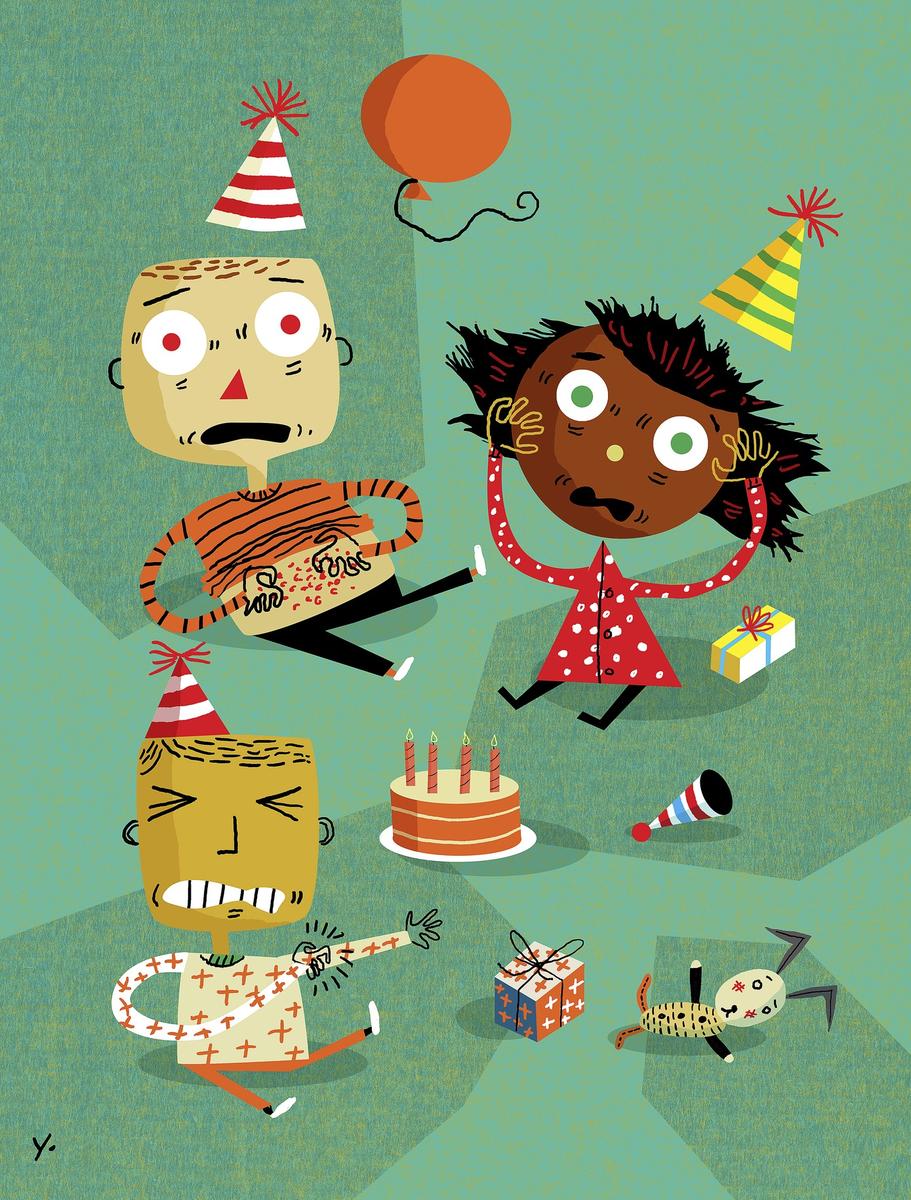
Though most parents know that catching something like molluscum, ringworm, or scabies has nothing to do with the cleanliness of their house or their kids, they still feel embarrassed. And unfortunately, that self-consciousness can be a powerful silencer that gives germs time to infect others.
Parents rounded up some of the least-discussed conditions that are essential to keep on your radar. All six of these stop being contagious soon after treatment starts, so the quicker you spot symptoms in your kid, the better your chances of halting a school-wide spread.

Molluscum Contagiosum
Often painless but always yucky looking, this is a skin infection that’s prevalent in children under 10 and caused by a poxvirus found not only on skin but also on clothing, towels, shower faucets, and gym mats. The rash usually pops up two to seven weeks after a child becomes infected. There’s no way to avoid catching molluscum contagiosum. The good news: “If a child gets it, she shouldn’t ever get it again,” says Andrea Zaenglein, M.D., professor of dermatology and pediatrics at Penn State/Hershey Medical Center, in Hershey, Pennsylvania.
First Symptoms: You’ll see one or a few pearly raised bumps that are no bigger than a pencil eraser and may have a dimple in their center. Sometimes the bumps itch, but many children, like my son, don’t feel them. They can appear anywhere on the body (though rarely on the palms of the hands or the soles of the feet).
Ditch It: “If you do nothing, the body will eventually fight it off,” says Dr. Zaenglein. “But that can take a year or more and it’s contagious the whole time.” If you decide to treat molluscum, your doctor’s plan will depend on your child’s age and the severity and location of the rash. He may recommend watchful waiting if your child is very young, has a lot of bumps, or has bumps in a sensitive area like the face or groin. In other cases, a dermatologist will apply a blistering agent (such as cantharidin) a few times over the course of a month or two, says Bobby Buka, M.D., clinic chief of the department of dermatology at the Icahn School of Medicine at Mount Sinai, in New York City. “If we were to treat 20 lesions, around 15 will go away and then three more will come. Then two weeks later we’ll treat eight of them and six will go away and one more will come. This treatment is usually conducted over three sessions, and the blisters should be relatively painless.” In some cases a doctor may use a curved blade called a curette to carefully scrape off the bumps. (Don’t worry: She’ll apply an anesthetic first.)
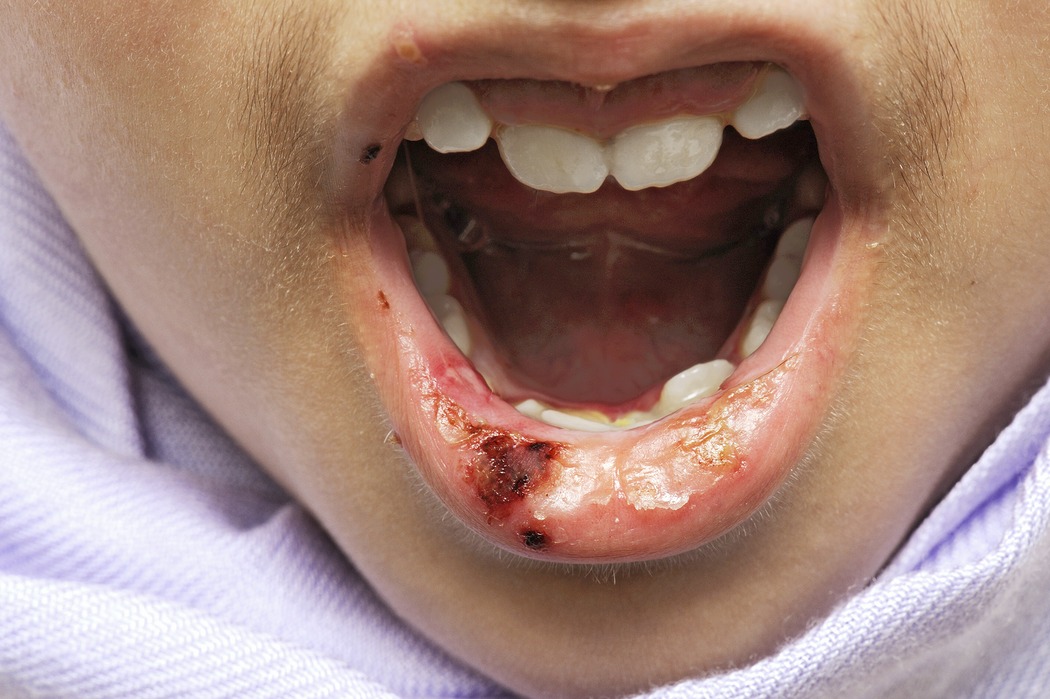
Cold Sores
You can blame herpes simplex virus type 1 for these pus-filled blisters and scabs on and around your child’s mouth. Because herpes is contagious through saliva even in the absence of sores, more than half of Americans carry the virus by their early 20s. Once you’ve been infected with herpes, the virus remains in your nerves forever, and a wide variety of events can cause it to come out of hibernation. “Cold sores got their name because when you have an upper-respiratory infection your immune system gets suppressed enough that it can trigger the herpes virus,” says Dr. Buka, who is also the founder of Greenwich Village Dermatology, in New York City. “But really, any type of stress can cause it.” So can sunlight or wind, a scrape on your child’s face, getting dental work, or not sleeping enough.
First Symptoms: The initial occurrence is often the most severe. “The sores may be quite large, tender, and painful, and they can show up in more than one place around the mouth,” says Dr. Zaenglein. Children may also have swollen gums, inflamed lymph glands, and a fever. After this, the virus goes dormant until your child’s next outbreak, which could be weeks, months, or years later—or never. (Scientists still don’t know why some people are more prone than others.) In kids, cold sores are largely an unsightly nuisance (especially for self-conscious tweens and teens), but in newborns, the infection can spread to the brain and become life-threatening. If you see a potential cold sore on your infant, call your pediatrician immediately.
Ditch It: Most cold sores will go away on their own in seven to 14 days; in the meantime, it’s fine to use ibuprofen or acetaminophen for pain. In extreme cases—when cold sores develop very frequently—your child’s doctor may prescribe an oral antiviral medication like acyclovir to lessen the infection’s severity and decrease occurrences. Over-the-counter topical creams may ease pain and speed healing in children over age 2.
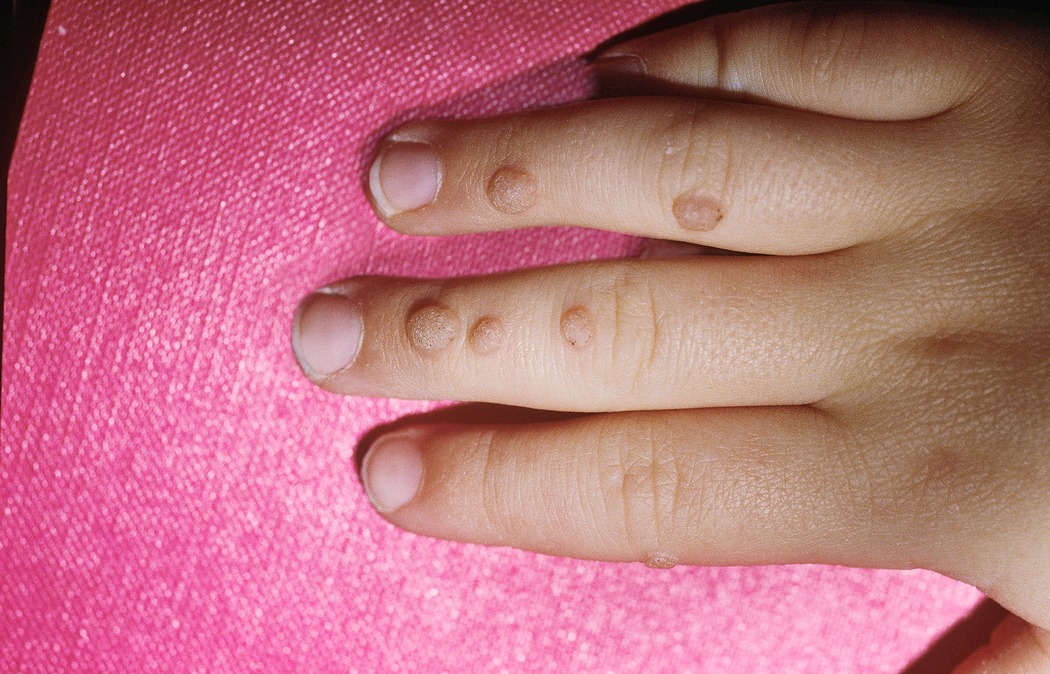
Warts
No more scapegoating frogs! These painless, benign lumps in the top layer of your child’s skin are caused by more than 100 different subtypes of human papillomavirus (HPV). “Finger warts, foot warts, facial flat warts, genital warts—they’re all from the same family of virus,” says Dr. Buka. And it’s a virus that’s pretty much impossible to avoid. “If you randomly go around and check people for HPV, many will have it on their skin. Whether your child develops warts depends on whether his immune system allows them to grow,” says Dr. Zaenglein.
First Symptoms: They vary depending on the type of wart. Common warts are small, rough, and skin colored, and they usually show up on fingers, hands, knees, or elbows. Smaller and smoother, flat warts appear most often on a child’s face and multiply rapidly; kids may have as many as 50 at one time. Plantar warts, on the sole of the foot, grow singly or in clusters. They often have a tough outer layer and can cause pain when your child walks on them. “Kids don’t get calluses too often,” says Dr. Zaenglein, “so if it looks like a small callus, it’s probably a wart.”
Ditch It: “Almost every treatment we have, such as freezing or burning, is painful,” says Dr. Zaenglein, “So if a wart isn’t bothering your kid, especially if he or she is young, it might be best to wait for it to go away on its own, which can take about two years.” In the meantime, regularly exfoliating a plantar wart with a pumice stone can ease your child’s discomfort (soak the foot first, then gently rub off dead skin). No patience? Try applying an over-the-counter wart-remover pad every 24 to 48 hours; it will remove the wart layer by layer over a number of weeks. Avoiding warts isn’t easy, but having your child wear shoes in shared spaces (locker rooms, pool decks) will help.
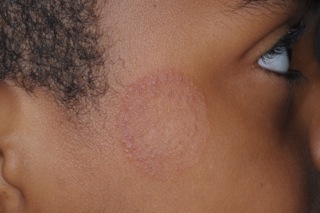
Ringworm
This fungus, also known as tinea, can appear anywhere on the body (although usually not everywhere at once). Young children often catch it from animals, mostly kittens and puppies but also guinea pigs, hamsters, or farm animals, says Dr. Buka. Then kids spread it to one another by sharing team uniforms, hairbrushes, or other close contact. The fungus thrives in warm, moist environments, like the skin of sweaty kids at play.
First Symptoms: You’ll see one (or a few) ring-shaped rashes, 1/2- to 1-inch in size, with scaly, raised edges. The ring will grow bigger and as that happens, the center usually starts to look like normal skin. On the scalp, ringworm causes red, scaly bald patches, sometimes with small black dots where the hair has broken off. (Contagious animals with ringworm don’t always have visible symptoms, but when they do, it also looks like bald patches.)
Ditch It: For small outbreaks on the body, an over-the-counter antifungal cream like Lamisil works well. See a doctor if the scalp is involved—treating this requires oral medication—or if your child has more than a few rings. Recently brought home a new pet? Have your vet check it for ringworm, too, and use high heat to wash and dry clothing or bedding it has touched.
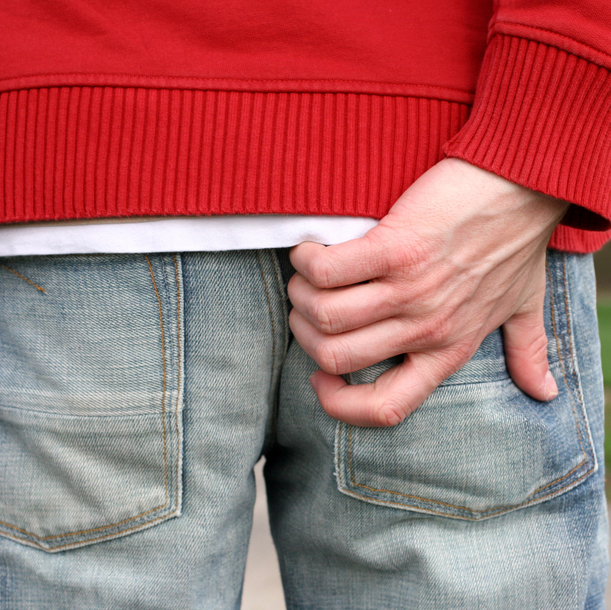
Pinworm
Common among the preschool and school-age set, the parasitic condition develops when your child’s not-quite-clean fingers go into her mouth and she swallows minuscule (and fortunately, harmless) worm eggs. These eggs incubate for one to two months, then hatch in her small intestine. From there, the adult female worms migrate to the colon and lay eggs around your child’s anus at night, making her itchy. Scratching transfers those eggs under her fingernails, and from there, to her clothing, bedding, and stuffed animals and to school surfaces like gym mats and carpets. The worms can survive on these surfaces for two to three weeks—and spread to other kids when they come in contact with them.
First Symptoms: If your kid’s got an intensely itchy bottom, especially at night, that’s a good sign she has pinworms, says Dr. Buka. To confirm the infection, your pediatrician will have you do a cellophane-tape test: First thing in the morning, press a piece of tape against the skin around your child’s anus and immediately remove it and put it in a zip-top bag. The doctor will examine it under a microscope for eggs.
Ditch It: Your pediatrician may want to treat the entire family with an oral prescription medication known as an anthelmintic (that means anti-worm), given in two doses two weeks apart. (At the very least, she’ll treat your child with it.) To kill any eggs that may linger, wash the whole family’s linens, pajamas, towels, and underwear in hot water, and dry on high heat.
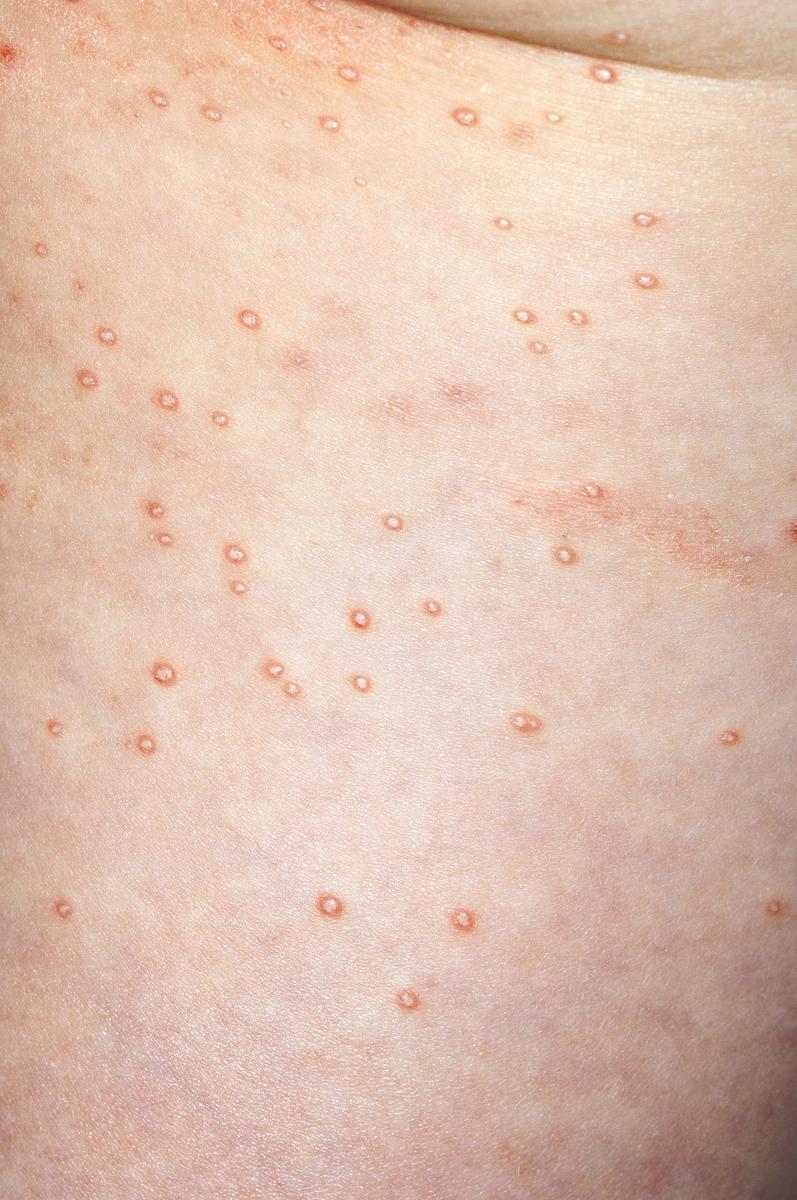
Scabies
Think of this condition as a bug infestation: It develops when microscopic mites burrow under your child’s skin, usually in folds and crevices. The mites spread quickly through cuddling and playing: It can take less than a week for your whole family to become infected.
First Symptoms: “Scabies is difficult to diagnose because the primary feature is usually an itch, not a rash,” says Dr. Buka. Doctors look for scratches on a child’s groin, nipples, armpits, and top of the butt. With an infant who doesn’t yet have the hand control to scratch, you may notice he’s suddenly not sleeping well or has become particularly cranky.
Ditch It: There are no OTC treatments for this itchy condition, so get to the pediatrician right away. She’ll likely prescribe a topical cream called permethrin, a common ingredient in insect repellent that is safe for children over 2 months old. Infants should be covered in it from head to toe for eight to 12 hours, says Dr. Zaenglein, while older children and parents—regardless of whether they’re symptomatic—will be treated from neck to toe (the mites don’t usually burrow where there’s hair). Make sure you get the cream under everyone’s fingernails too. To avoid reinfestation, wash and dry fabric items from your home on high heat.
Parents Magazine

